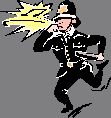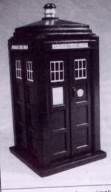When I was first issued my raincoat, it was made of a rubberized material and I was allocated a size that would have been ideal for a man two feet taller than I was. The answer to the problem was to cut eighteen inches off the bottom and six inches off each arm. When it eventually appeared at the police station, the length was about right but the “tailors” had overlooked the pockets, which of course remained in the same relative position to its original size and out of reach for me to put anything in
In the early 1960s we were still being issued with a ceremonial uniform and the jacket was fitted tight, in other words if the fitter could insert his fingers into the over lap of the front of the jacket it was too loose. This jacket was based on the Victorian style uniform and was buttoned up to the neck and came with a thick leather belt. It was made of Melton cloth and was completely lined with flannel. The trousers were so thick that they could be stood up alone. The final article that made up the complete uniform was a cape made of the same rubberized material as our raincoats, and this was carried rolled up into a regulation bundle and hung on the side of our belts with a hook. The complete uniform weighed in at about 44lbs (20kgs). In those early days whenever there was a ceremonial duty to perform we received an order that “No 1’s” were the dress of the day. Having paraded for duty, normally several hours in advance of the time of the event, we were then conveyed by open backed trucks into central London. During the trip, a cape was inevitably unrolled and spread across knees to form a makeshift table, and a game of cards was started. Often these duties extended beyond the normal eight hour day, and so we had to carry our food in small packets, normally sandwiches. These had to be packed flat in order that they weren’t too visible by bulging the pockets of our uniforms. Sandwiches frequently became soggy bundles because of the tight packing of the men in the back of the trucks. On rare occasion our duties covered less than the regulation eight hour day, and upon returning to our home police station we then had to resume patrolling. If we hadn’t anticipated this, and left a normal working uniform at the police station we would be expected to patrol in our “ceremonials”, this of course caused great mirth amongst the local villains and gave them an opportunity to bait the local policeman whom they knew couldn’t run in such a heavy and unbending uniform. A vast improvement on the open backed trucks came, when we were issued with travel permits and were able to catch the underground to the destination of our duties. During the winter months when the weather became very cold on the night shift a message would be received at the police station by teleprinter from Scotland Yard. An anonymous, but caring officer, would have decided that “indulgence” was allowed. That meant that we were allowed an extra meal break of 45 minutes and could also wear the very thick but warm ceremonial trousers, one of the rare occasions when men wanted to wear their ceremonial trousers.


